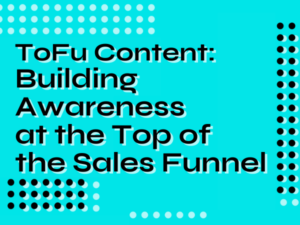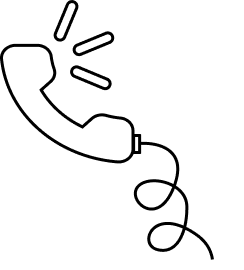Unraveling the inner workings of the human mind is an exciting endeavor in and of itself, but it also serves a practical purpose.
Sound knowledge of cognitive biases and principles is a valuable tool you can use to make your marketing efforts more effective.
Although search engine optimization (SEO), as the name suggests, focuses on uncovering the secrets of search engines, it ultimately boils down to two elements:
- understanding your customers,
- providing your customers with the best experience possible.
After all, search engines are designed by and for humans.
- The buying decision process can be divided into two phases: communication and understanding.
- Social proof, authority bias, color psychology, loss aversion, are all important components of the buying decision process.
- Labor illusion, anchoring bias, and sunk cost fallacy can all be used to increase conversions.
- Paradox of choice can affect user’s ability to make a decision, which needs to be considered while creating an offer.
If you were to look under the hood of the machinery built to make our lives easier, you would have found a beating human heart.
By examining your audience through the lens of psychology, you can establish its hidden motivations, preferences, and tendencies.
Doing so allows you to leverage the natural patterns of human behavior to reach your goals – improve customer satisfaction, grow conversion rate, and many more.
Let’s take a closer look at the mechanisms that affect how humans make decisions and interact with the outside world.
Two Components of the Buying Decision Process
Before going any further, there is one crucial issue to discuss.
The psychology of conversion is a complex field. Similarly, the decision-making process is not the most straightforward thing to describe.
Because of this, we will focus on only a few psychological factors that affect a buyer’s decision.
Similarly, we will simplify the buying decision process to make it more accessible.
That said, one can divide this process into two unique phases, which can be unfolded into the following categories:
| Communication | Understanding |
|---|---|
|
|
First, the potential buyer must find your products and services in the sea of available options. It requires effective communication. Otherwise, your message will get lost in the noise, and you will struggle to grow your customer base.
Next, the potential buyer must understand what you have to offer and purchase it without encountering issues. Your aim here is to make the whole process more manageable, avoiding psychological factors that could deter people from placing an order.
Here is a brief explanation of various tendencies and biases that may affect these components of the buying process.
Communication
The Coca-Cola Company – one of the world’s most prominent beverage companies – was one of the first to comprehend the advantages of studying the behaviors of customers.
In 1911, its representatives approached Harry Levi Hollingworth. Facing a lawsuit from the federal government, they asked the researcher to examine the psychological effects of caffeine on humans.
The agreement was reached, and Hollingworth conducted psychological research that began a new era in marketing. Since then, corporations have taken great interest in applied psychology.
One area of particular interest to them was how they could effectively convince more people to use their services and purchase their products.
Nowadays, you can explore the same tendencies and biases they discovered to communicate your brand message more effectively and increase the visibility of your business.
Social Proof
Social proof is an ideal explanation for Aristotle’s famous claim that “man is by nature a social animal.” Simply put, it describes our tendency to follow the opinions of others.
It might sound harsh, but we are hardwired to agree with other people. Some researchers even put forward theories that we experience social exclusion as painful because it interacts with our physical pain system.
How does this tendency work in practice? A series of clinical trials conducted by Solomon Asch in the 1950s sheds more light on the issue.
If you were to select the line that is the closest equivalent to the target line, which one would you pick?
As it turns out, your decision can be affected by the opinion of people who give their answers before you.

Over the 12 critical trials that Asch conducted, one in three participants, on average, conformed to the majority view – even though it was obviously incorrect.
Furthermore, about 75% of all participants conformed at least once.
In the control group, only about 1% of the participants gave an incorrect answer.
A similar thing happened when researchers tested what kind of message would convince more people to reduce their energy consumption by switching from air conditioning to regular fans.
Different groups of people were presented with one of the following messages:
As you might expect, option number four was the most effective, convincing the people from this group to lower their energy consumption by 10% compared with a control group.
No other option recorded a result better than 3% lower power consumption than in the control group.
These examples showcase the insurmountable pressure to fit in.
People are willing to go to great lengths just to be accepted by society, even if it means going against common sense and their own convictions.
Okay, but how can you use this tendency in marketing?
Simple – just present your customers with information that shows the popularity of your product or service.
For example, if you sell handmade dolls in various colors, you could place the most popular option at the center of the screen with a short note that says “the most popular choice.”
It will nudge your customers to follow in the footsteps of those who have already purchased the doll.
Once you establish your products and services as trendy, you will simultaneously communicate to your customers that they are a valuable resource.
And from there, your task of encouraging clients to buy more stuff and do it more often will become more straightforward.
Authority Bias
The punk movement created in the 1970s was all about expressing your rage about the state of the world and defying authorities. At the time, the powers that be were the number one enemy of the youth.
However, as it turns out, humans naturally tend to obey authority.
Probably the most well-known representation of this bias is the Milgram experiment.
In the 1960s, Stanley Milgram created a study in which he asked the participants to deliver electrical shocks to another person.
They were to take on the role of “teachers,” shocking the “student” if they gave the wrong answer.
The experimenter oversaw the whole process and instructed the participants if the student’s response was incorrect and when to deliver further shocks.
Of course, the whole thing was just a ruse to test how far people would go if they received orders from someone in a position of authority.
The results? 65% of the participants in the study delivered the maximum shocks.
Even if the student complained about their heart condition or started banging on the walls and demanded to be released, the teachers were still following the orders.
Many teachers got agitated or angry with the experimenter. Nonetheless, they never stood up to their authority.
Now, we do not encourage you to shock your customers!
Instead, you can use the authority bias to communicate that you are an expert, a highly regarded professional, or a worldwide leader in your niche.
Adding a banner with just a few logos of famous brands you cooperate with might be a real game changer. Testimonials and direct endorsements work even better, painting you as a reliable business partner.
Once people notice you are in good relations with highly respected companies, they will start to see you as an authority. And, as it is one of the components of E-E-A-T, it will improve your online presence.
Anchoring Bias
You are probably familiar with the saying that “the first impression is the last impression.” While it is a gross exaggeration, there is some merit to it.
The anchoring effect is a cognitive bias that describes users’ reliance on the first piece of information they receive. It is what solidifies the importance of the first impression in our minds.
Many companies already use this bias to shape customer behavior and sell more products. First, they present the incredibly high “anchor price” and then offer the product or service for a fraction of the first price point.
Steve Jobs mastered the technique, convincing millions of people that the thousands of dollars they pay for their Apple products are, in fact, a bargain. The company continues to use the anchoring effect to steer price expectations to this day.
Starting high and working the cost down can be an excellent solution to communicate to the customers that they are better off doing business with you rather than with your competitors.
Color Psychology
Colors play a significant role in our lives. Popular phrases like feeling blue and seeing red demonstrate the link between them and human emotions.
This link is what scientists explore when they delve into color psychology. And with more research on the topic, the amount of evidence suggesting that colors affect human behavior and responses only grows bigger.
When new users enter your website, they need only milliseconds to form an aesthetic judgment of your web design. The colors you use on your site make up a substantial portion of this first impression.
This is actually an exercise we can do ourselves when we want to understand how others might feel.
Here are examples of two very different homepages.

A white background and a black one.
How do they make you feel? How do you perceive them?

So, the colors you select for your brand constitute how others perceive it.
You can use this fact to send the right message and convince more people to take action on your website.
At the same time, the color of your call-to-action buttons and links can help your customers understand what they should expect from you.
Here is a brief description of what some of the common colors typically stand for:
- Blue: trust, loyalty, responsibility, calmness
- Yellow: caution, joy, confidence, optimism,
- Red: passion, appetite, excitement,
- Green: creativity, balance, nature, innovation, health,
- Orange: success, determination, happiness, friendliness,
- Black: elegance, luxury, sophistication,
- Purple: wisdom, wealth, royalty.
Still, it is worth pointing out that not everybody reacts the same way to the same color.
You need to carefully consider your target audience to communicate what you want with your color design.
Joe Hallock’s research suggests there is a difference in the preference of colors between men and women.
While men overwhelmingly prefer blue over other colors, women are less inclined to agree with this assessment. Instead, they enjoy purple, which might explain why many beauty brands use this color in their marketing materials.
Other variables you should consider include age, the number of colors you want to use, and their position on the color wheel.
For example, red and orange are analogous colors, and yellow and purple are complementary colors.


Take some time to experiment with different color combinations to find the one that will look the best on your website and communicate what you want.
Labor Illusion
Labor illusion works similarly to the guiding principle of numerous directors and writers called “show, don’t tell.“
The latter is a technique used to allow the reader to experience critical points of the story through actions rather than exposition.
The former is a tendency to value things more when one sees the work that went into creating them.
Both make people more engaged in the experience, whether it is watching a film, reading a book, or buying a new smartphone.
The 2011 article by Ryan W. Buell and Michael I. Norton illustrates perfectly the practical application of the labor illusion. The researchers argue that
In other words, when someone gives us the solution instantly, we tend to doubt it is the best option.
If you serve your customers right away, they may feel that more effort should go into the task if it is to be done correctly.
You can leverage this conviction by being transparent about your delivery process and presenting your clients not only with the fruits of the labor but also with the labor itself.
Do not be afraid to communicate to your audience that you work your tail off to provide outstanding service.
Why not create a social media post where you give your followers a peek behind the curtain? For instance, you can create a short video where you present all the departments in your company.
Alternatively, you could write a blog post where you explain all the steps of the process to create a single item from your offer. The possibilities are limitless!
Loss Aversion
Finding $100 in your pocket is always nice. But losing $100 can be a much more emotion-charged experience.
In general, people take losses much more harshly than they should – at least proportionally to enjoying equivalent gains.
This cognitive bias is called loss aversion, and it can help you grow your business.
The simplest way to make it work in your favor is to show your customers what they stand to lose by not doing business with you instead of explaining what they can gain.
Have your products or services helped others succeed in their endeavors? If so, include this information in your pitch.
It will communicate that working with you is an advantageous move.
Similarly, if you have prestigious achievements under your belt, display them on your website.
You could also inform your potential investors that if they do not contact you, they will miss out on the opportunity to speak with one of the leading experts in the industry.
Once you convince others that working with your firm is an attractive solution to avoid losses, you will grow conversions and improve your company’s revenue.
In its extreme form, loss aversion may even lead to the sunk cost fallacy.
In short, the sunk cost fallacy is the fear of letting go of something due to the time, money, or energy one invested in pursuing it.
Sending reminders to your customers about renewing their policy, using a promo code before it expires, or taking advantage of a special offer is an excellent method to remind them of your existence.
Nevertheless, its actual value lies in presenting them with the prospect of losing assets they already possess. Use this unique effect to attract more visitors to your website and boost your conversion rate.
Understanding
The second pillar of turning more site visitors into loyal followers is helping them understand what you bring to the table and why it is valuable.
The primary obstacle in your pursuit of this goal is business friction. It is the psychological resistance to act.
Factors that affect friction include the number of steps one needs to take to order a product, its complexity, etc.
For example, lowering the number of forms your customers need to fill out to make a purchase will reduce the friction. At the same time, increasing it will most likely end up with the opposite result.
Unfortunately, you cannot reduce your business friction to zero. No matter how streamlined the experience, it will always involve some friction.
Still, you can apply several solutions to make it less of a factor and deliver a more effortless shopping experience for your customers.
Analysis Paralysis (AKA The Paradox of Choice)
Hick’s law states that the more options one can choose from, the more challenging it is to make the decision.
Suppose you are in a restaurant and are presented with a choice between two of your favorite drinks – tea and coffee. As there is not much to deliberate on, you do not have too much to think about and should have no issue coming up with an answer after giving it some thought.
Now, let’s imagine you visit the new bar that recently opened down the street. They have a wide selection of alcoholic and non-alcoholic beverages you want to try.
This situation is entirely different from the first example because it includes more variables you must analyze. Due to the fear of making an error or forgoing a superior solution, you could experience a state of hesitation known as analysis paralysis.
An excellent example of this peculiar state is the Buridan’s ass, a paradox named after the 14th-century French philosopher Jean Buridan. It satirizes the philosopher’s stance on moral determinism by presenting the following hypothetical situation.
Let’s imagine a donkey that is equally thirsty and hungry.
Now, let’s place it exactly midway between a stack of hay and a pail of water.
Unable to make the most rational choice in these circumstances, the animal dies of both hunger and thirst.
While ridiculous, this paradox shows how perplexed your customers might be if you bombard them with too many choices – even if they wanted to make those choices in the first place.
As a result, although it might sound counterintuitive, the more is not always the merrier.
If you make your customers anxious about their decision, they will forgo the effort to understand what you have to offer and seek more straightforward solutions elsewhere.
With that being said, try to design your website so that it does not present a user with too many choices right away.
This is why, despite offering different packages for different customer needs, we only offer four services:
Similarly, do not create several niche plans for your clients to select from. Limiting yourself to three general options and discussing the details with each customer is much better.
The most important thing is to notice the areas where you have too many options and try to trim them down.
You can merge similar categories into one, eliminate niche and poor-ranking sites, or hide some items behind additional menus. (Beware of creating too many menus and making your website architecture too deep.)
If it is impossible to reduce the number of alternatives, place the available options in an easily skimmable order. This way, you will not overwhelm the customer, increasing your chances of landing a sale.
Confirmation Bias
Confirmation bias is arguably one of the most damaging aspects of human nature. It implies that every person seeks information that further supports their beliefs.
Many studies aid this claim. For instance, Dutch psychologists have discovered that waitresses who copy their customers’ behavior receive bigger tips.
So, while opposites might attract at first (experiencing something new is exciting), they will ultimately grow tired of each other.
After all, not many people would willingly spend much time in the company of someone who is their polar opposite.
What does it mean for marketers?
It all comes down to a single rule.
You must speak your customers’ language for them to understand you and do business with your company.
It might sound simple enough, but it is actually much more challenging to pull off in practice.
However, completing this task requires knowing what language this audience speaks.
It creates the need for extensive analysis of multiple variables that affect this aspect, calling for further research, etc.
Do you see the pattern?
One seemingly straightforward task can suddenly grow in complexity and scale.
Nonetheless, if you manage to get on the same page as your customers, you will have a much higher chance of success.
After people notice that you are willing to communicate on their terms, they will flock to your business, seeking confirmation of their beliefs.
Visual Salience
In this day and age, we are surrounded by information. Visual salience is one of the mechanisms that allow us to filter this information and avoid getting lost in it.
It is an ability to focus on a distinct quality, making the task of finding a unique element less tiresome.
If your wardrobe is full of white t-shirts except for a black shirt, it will immediately stand out from the rest. A situation like this is what visual salience is all about.
This perceptual quality allowed us to survive as a species for a long time. Without it, we would be unable to spot disturbances in patterns and changes in our environment.
Today, you can use the same primitive ability to convince more customers to click a promotional banner or check your offer.
If you create a homepage with a non-invasive background color and add CTA (call to action) buttons in an easily distinguishable shade, you could increase the number of conversions.

Using A/B testing to see what colors work best for different elements of your site is an excellent idea.
This way, you can create an unmistakable visual identity while leveraging visual salience to your needs.
Design your website with visual salience in mind and help your customers understand what elements of it are crucial.
Cognitive Fluency
When you design your website, it is easy to get carried away. After all, you want it to look gorgeous and attract more clients.
As such, you might start mixing and matching multiple colors and shapes to set the right tone or convey your message in a more flashy way.
But it can increase the cognitive load your customers have to deal with.
Consequently, you might overburden them with sensory information, preventing them from quickly understanding what you offer and why they should buy it.
Cognitive ease, also known as cognitive fluency, is a psychological principle that can help you avoid this issue.
Adhering to this principle requires you to follow the minimalism trope and avoid putting any excess information on your homepage.
Everything you place on your website should have a clear purpose. If an element does not explain what your company does, what it offers, or why people should care about it, you can probably eliminate this element from your site.
Do not feel obligated to explain everything in detail, especially on your front page.
Instead, use a style that emphasizes simplicity.
This way, you will not overwhelm your customers with too much data and will keep them engaged in what you have in store.
Progressive Disclosure
This point ties in nicely with the previous one. Basically, it revolves around presenting your clients with the most cut-and-dried message upfront and systematically explaining more complex features along the way.
As previously mentioned, customers might get discouraged if the buying decision process is complicated or involves too many steps.
Progressive disclosure mitigates this problem by allowing you and your customers to focus on the core features of your product or service at the first stage of your relationship.
Consider how your website UI design presents your products and services.
If you notice that it guides your customers towards reading more about complex features you can adjust later, you might want to rethink your layout.
Perhaps you can make your landing page even more to the point, linking it to more nuanced topics.
On the other hand, maybe you could make your application easier to learn by adding a short video tutorial to your website.
Remember that users want simplicity more than anything else. Deliver it to them, and they will quickly understand how much they can gain by doing business with you.
Scarcity
Using scarcity in marketing is not a new concept. The reason for its widespread use is simple – it gets excellent results.
Many organizations concentrate their marketing efforts on convincing people the products and services they offer are one-of-a-kind and not easily replicated.
If you want to join them, you must convince your clients that they need to hurry to purchase your products. Otherwise, someone else will buy the item they want, leaving them empty-handed.
How to instill a sense of urgency in your customers? You can choose from several options. Here are a few of them:
- Adding a cart timer to your website.
- Showing how many items are left in stock next to their description.
- Displaying a notification every time someone buys a product.
- Sending emails to customers with time-limited promotion offers.
- Offering special edition products on your website.
- Selling seasonal products, such as holiday-themed clothing or accessories.
Scarcity marketing can convince hesitant customers to place an order and buy more stuff. Once your potential clients understand your offer is unique, they will be ready to spend a pretty penny to get their hands on it.

Wojciech PopielaWhen considering the applications of psychology and neuroscience in sales, one needs to take a look at evolution. 2 million years of evolution have adapted us to survive in a bygone world. Our senses, perception, management of physical and mental energy have taken shape to ensure our survival.
All of the examples presented by Przemek date back to the primal man fighting for survival in a world of constant scarcity. A world where expending energy, loss (e.g. of food) or color perception could decide the life or death of our caveman. Will he see the danger and react on time? Will he have enough strength to flee or fight?
Our minds, tasked with acquiring food and fighting until only recently, now work in a vastly different world. In a world of shopping decisions, the Internet and everything going digital. However, deep inside there still is the caveman and his reptilian brain. Somewhere beneath the cerebral cortex we are still the primal man. Brands can utilize knowledge of neural marketing to promote their products and services. And use of such methods is on the rise.
Co-Founder of Webmetric, lecturer at Collegium Da Vinci.
The Bottom Line
Designing your website according to these psychological principles can help you outrank your competitors and enjoy higher conversion rates. But, it is not simply a matter of exploring every tendency that you possibly can.
Like many other things in life, this process involves much trial and error. Instead of jumping on each opportunity that comes your way, be selective about the biases you want to leverage.
These principles allow you to achieve success regardless of the type of online business you run or intend to run. However, some guidance is always needed.
Stay focused on your goal and look for the most beneficial way to use the natural patterns of human behavior. You will not regret it!


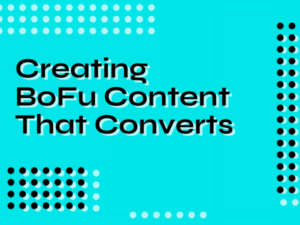

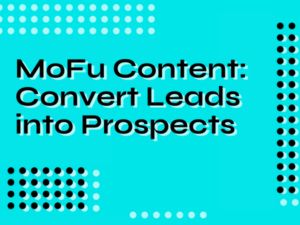
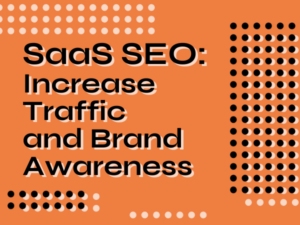
![Google March 2024 Core Update: What we know so far? [Don’t Panic]](https://non.agency/wp-content/uploads/2024/03/google-march-2024-core-update--300x225.png)
